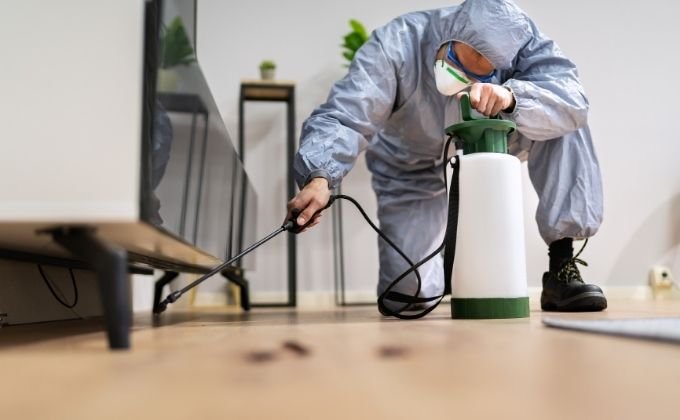Understanding the Importance of Safe Pest Control
Dealing with pests in homes or workplaces can be stressful and frustrating, especially when trying to balance effectiveness with safety. Many people look for solutions that not only eliminate infestations but also protect their family, pets, and environment. This is where knowing how to get answers becomes crucial. By seeking the right guidance, you can uncover pest control methods that are safe, eco-friendly, and effective for long-term results. Understanding what works and what doesn’t helps reduce risks associated with harmful chemicals while ensuring pests do not return.
Common Pest Control Challenges
Households and businesses often encounter pests such as ants, cockroaches, rodents, termites, or bedbugs. Each of these invaders requires a different strategy. Without the right information, people may waste time and money on treatments that provide only temporary relief. For instance, while chemical sprays may kill pests quickly, overuse can lead to health issues or environmental damage. To avoid such problems, it is important to learn how to get answers from reliable resources that explain which methods are safest and most efficient for specific infestations.
Researching Eco-Friendly Pest Solutions
Many homeowners today prefer eco-friendly pest control options. Natural solutions such as essential oils, diatomaceous earth, or biological pest control methods are gaining popularity. These alternatives minimize exposure to toxic substances while effectively addressing infestations. When searching for reliable methods, knowing how to get answers from scientific studies, professional pest control companies, or government health websites can guide you toward sustainable practices. Eco-friendly pest control is not just about eliminating the problem; it is about doing so responsibly.
The Role of Professional Pest Control Services
Sometimes, infestations are too severe for DIY methods. Professional pest control services bring expertise, specialized equipment, and tailored strategies to handle complex issues. However, not all companies use the same standards or safe practices. To ensure your family’s safety, you need to know how to get answers when comparing different providers. Asking about their treatment methods, certifications, and safety measures can help you choose the right service. Reputable professionals often use integrated pest management (IPM), which combines preventive measures, monitoring, and targeted treatments to reduce pesticide use.
Preventive Measures for Long-Term Protection
Safe and effective pest control is not only about treating infestations but also about preventing them in the first place. Simple actions such as sealing cracks, maintaining cleanliness, reducing moisture, and storing food properly can keep pests away. However, many people are unsure which preventive measures work best for their situation. Learning how to get answers from experts, articles, and case studies can guide you in adopting the right practices. Preventive strategies reduce the need for chemical treatments and create a healthier living space.
Evaluating Safety Concerns with Chemicals
While chemical pesticides are effective, they also raise concerns about human health and environmental impact. Misusing or overusing them can contaminate food, water, and air, posing risks to children, pets, and wildlife. Therefore, it is essential to understand safety guidelines before using these products. Knowing how to get answers from official labels, instruction manuals, or pest control experts ensures that chemicals are applied correctly and responsibly. Reading labels carefully and following safety instructions can make a big difference in reducing risks.
Balancing Effectiveness with Responsibility
Choosing pest control methods involves striking a balance between quick results and long-term safety. While some people want immediate relief from pests, others prioritize methods that minimize chemical exposure. Fortunately, modern pest control approaches offer solutions that combine both. Integrated pest management, for example, focuses on monitoring pests, identifying sources, and using targeted treatments only when necessary. To make informed decisions, homeowners should learn how to get answers through trusted resources that compare various pest control techniques and explain their pros and cons.
Reliable Sources of Information
In today’s digital age, information is everywhere, but not all sources are trustworthy. Social media tips or unverified DIY solutions may cause more harm than good. Instead, homeowners and business owners should rely on credible platforms such as government health departments, pest control associations, or university research centers. Knowing how to get answers from these reliable sources ensures you are following practices that are scientifically proven and safe. Additionally, consulting professional exterminators with certifications adds another layer of confidence in your choices.
Building Confidence in Your Pest Control Decisions
One of the biggest challenges for homeowners is knowing whether they are making the right decision about pest control. With so many options available, confusion is common. However, by taking the time to explore expert opinions, case studies, and safety guidelines, you can feel more confident in your approach. Understanding how to get answers builds not only knowledge but also peace of mind, ensuring that your home remains both pest-free and safe for everyone who lives there.
Conclusion
Safe and effective pest control requires a careful balance of knowledge, responsibility, and action. Whether you are considering natural remedies, professional services, or preventive measures, the key is knowing how to get answers from reliable and trusted sources. By doing so, you can ensure that your pest control methods protect your home, family, pets, and environment while successfully eliminating infestations. Informed decisions lead to long-term solutions, making your living space healthier and more secure.



